Featured Articles
Mismatches Need Not Apply; Fight Night Series Promises Competitive Bouts

Mismatches Need Not Apply; Fight Night Series Promises Competitive Bouts – The NBC Sports Network is starting a boxing series, which kicks off on Jan. 21, and I am rooting for the venture to succeed. Main Events, run by Kathy Duva, is the promoter in charge of putting together Fight Night Series, and I am hoping that the endeavor is a success for them as well.
This is not because I happen to think Kathy Duva is a decent soul who does business the right way, and is a promoter who actually promotes the sport and the fighters the old school (read: correct) way. I do think that, but that is beside the point. I root for NBCSN and Main Events to make a splash with the four shows which are slated to run in 2012 because I want the sport as a whole to succeed, and the more avenues boxers have to show their stuff, the better off the sport will be.
Ideally, boxing gets back where it belongs, on terrestrial TV. That issue came up on a Monday conference call, featuring Jon Miller, President of NBC Sports and Versus (Versus is the cable net which will be re-named NBC Sports Network on Jan. 2), Duva and Russell Peltz, the Philly promoter-matchmaker who will find the fights, along with Duva, which will run on Fight Night.
“I’m excited to be getting our team back on boxing,” Miller said, recalling that NBC used to put on 20-30 shows a year in the early 90s. He said that the sport has been a bit underground in the last decade, and that his crew recognized an opportunity to get some compelling live programming for his company.
I am always hoping that fights get back on “free TV” as I think it’s a no brainer that it is in the best interest of the growth of the sweet science to have as many eyeballs as we can get on the athletes and the superior drama a scintillating prizefight can deliver. Miller didn’t promise that we’d be seeing fights or cards running on NBC on Saturday afternoon again, but I hold out hope. He did say that if things go well on Saturday night of Jan. 21, and March 24, the second pegged date, he would consider adding more shows to the mix. Shows will run in June and December of 2012, he said.
Miller said he was happy to be doing business with Duva, and he hooked up with her because he heard what he wanted from Main Events: that they will strive to show pick ‘em fights, and won’t be in the business of making showcase matches, to build up prospects’ records or give stars stay-busy opportunities. He did make clear that it would make sense to branch out into more marquee matchups, since NBC Sports Network is owned by Comcast, which is the largest cable network in the US.
Duva said she didn’t want to release monetary figures, reasoning that if she said that NBC paid her X amount, other promoters, who are encouraged to bring their fighters into the mix, and also manager, will be married to a set figure. She made it clear that the purses going to the fighters will exceed the fee paid by NBC. She also said they wouldn’t be focusing and overpaying for one fight, at the expense of the whole card.
That Main Events is a lean and mean company, and doesn’t have 30 or 60 fighters in their stable, she said, will allow them more leeway in searching for the best quality bouts.
Peltz said he was psyched to be putting on the first show away from a casino, and the frequently sterile atmosphere which can often be found there. The Jan. 21 show, pitting heayweight Eddie Chambers against Sergei Liakhovich and Gabriel Rosado against Jesus Soto-Karass, in a junior middleweight scrap will take place at Philly’s Asylum Arena. Rosado and Chambers are Pennsylvania guys, so we can presume their people will be a loud presence and help generate electricity in Asylum.
Fight fans have been curious to know if we will see one, two or more bouts in the new series. Duva said probably three bouts will air from each show.
Apart from this series being a potential entry onto free TV (read: NBC), I’m also hoping that it helps usher out the emphasis on the undefeated record in boxing. Rosado has five losses but is a fan fave, and Soto-Karass is coming off back-to-back losses to Mike Jones, but is a volume guy who comes to bang. Fans would rather see guys with losses in competitive bouts than coddled hitters with puffed up records staying busy against speedbumps, and it is time that UFC mentality, of not lionizing the loss-less, trickles down to us.
Peltz drew laughs when he recollected his involvement in fights on NBC in the early 80s. Every Frank “the Animal” Fletcher fight, he said, “was like Armageddon” and had Peltz popping Valium to stay sane.
He reiterated that this series won’t be the place where we’ll see a future star inch his way up the ladder, taking on progressively better foes, but each time entering a fight in which he is the far and away favorite. “We don’t want to sacrifice the integrity of the series to have a guy 9, 10-0 and give them a free pass,” he said. “There are more undefeated folks parading around than in the history of boxing.”
Mismatches Need Not Apply; Fight Night Series Promises Competitive Bouts / Check out more boxing news on video at The Boxing Channel.
Featured Articles
Jaron ‘Boots’ Ennis Wins Welterweight Showdown in Atlantic City
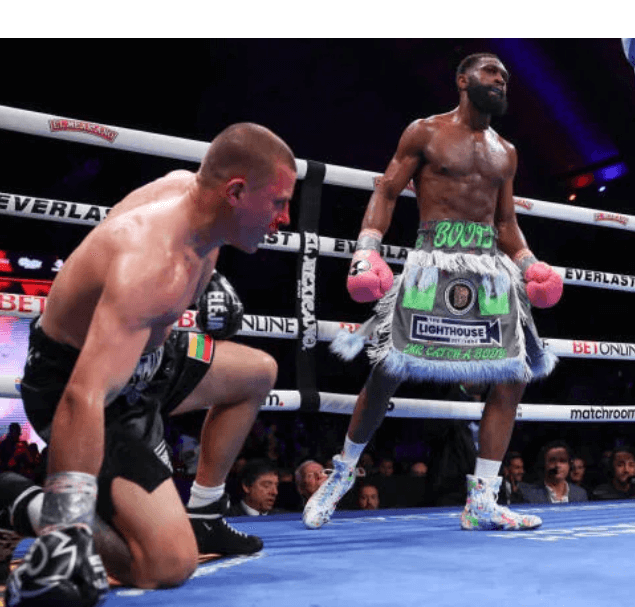
In the showdown between undefeated welterweight champions Jaron “Boots Ennis walked away with the victory by technical knockout over Eamantis Stanionis and the WBA and IBF titles on Saturday.
No doubt. Ennis was the superior fighter.
“He’s a great fighter. He’s a good guy,” said Ennis.
Philadelphia’s Ennis (34-0, 30 KOs) faced Lithuania’s Stanionis (15-1, 10 KOs) at demonstrated an overpowering southpaw and orthodox attack in front of a sold-out crowd at Boardwalk Hall in Atlantic City, New Jersey.
It might have been confusing but whether he was in a southpaw stance or not Ennis busted the body with power shots and jabbed away in a withering pace in the first two rounds.
Stanionis looked surprised when his counter shots seemed impotent.
In the third round the Lithuanian fighter who trains at the Wild Card Gym in Hollywood, began using a rocket jab to gain some semblance of control. Then he launched lead rights to the jaw of Ennis. Though Stanionis connected solidly, the Philly fighter was still standing and seemingly unfazed by the blows.
That was a bad sign for Stanionis.
Ennis returned to his lightning jabs and blows to the body and Stanionis continued his marauding style like a Sherman Tank looking to eventually run over his foe. He just couldn’t muster enough firepower.
In the fifth round Stanionis opened up with a powerful body attack and seemed to have Ennis in retreat. But the Philadelphia fighter opened up with a speedy combination that ended with blood dripping from the nose of Stanionis.
It was not looking optimistic for the Lithuanian fighter who had never lost.
Stanionis opened up the sixth round with a three-punch combination and Ennis met him with a combination of his own. Stanionis was suddenly in retreat and Ennis chased him like a leopard pouncing on prey. A lightning five-punch combination that included four consecutive uppercuts delivered Stanionis to the floor for the count. He got up and survived the rest of the round.
After returning shakily to his corner, the trainer whispered to him and then told the referee that they had surrendered.
Ennis jumped in happiness and now holds the WBA and IBF welterweight titles.
“I felt like I was getting in my groove. I had a dream I got a stoppage just like this,” said Ennis.
Stanionis looked like he could continue, but perhaps it was a wise move by his trainer. The Lithuanian fighter’s wife is expecting their first child at any moment.
Meanwhile, Ennis finally proved the expectations of greatness by experts. It was a thorough display of superiority over a very good champion.
“The biggest part was being myself and having a live body in front of me,” said Ennis. “I’m just getting started.”
Matchroom Boxing promoter Eddie Hearn was jubilant over the performance of the Philadelphia fighter.
“What a wonderful humble man. This is one of the finest fighters today. By far the best fighter in the division,” said Hearn. “You are witnessing true greatness.”
Other Bouts
Former featherweight world champion Raymond Ford (17-1-1, 8 KOs) showed that moving up in weight would not be a problem even against the rugged and taller Thomas Mattice (22-5-1, 17 KOs) in winning by a convincing unanimous decision.
The quicksilver southpaw Ford ravaged Mattice in the first round then basically cruised the remaining nine rounds like a jackhammer set on automatic. Four-punch combinations pummeled Mattice but never put him down.
“He was a smart veteran. He could take a hit,” said Ford.
Still, there was no doubt on who won the super featherweight contest. After 10 rounds all three judges gave Ford every round and scored it 100-90 for the New Jersey fighter who formerly held the WBA featherweight title which was wrested from him by Nick Ball.
Shakhram Giyasov (17-0, 10 KOs) made good on a promise to his departed daughter by knocking out Argentina’s Franco Ocampo (17-3, 8 KOs) in their welterweight battle.
Giyasov floored Ocampo in the first round with an overhand right but the Argentine fighter was able to recover and fight on for several more rounds.
In the fourth frame, Giyasov launched a lead right to the liver and collapsed Ocampo with the body shot for the count of 10 at 1:57 of the fourth round.
“I had a very hard camp because I lost my daughter,” Giyasov explained. “I promised I would be world champion.”
In his second pro fight Omari Jones (2-0) needed only seconds to disable William Jackson (13-6-2) with a counter right to the body for a knockout win. The former Olympic medalist was looking for rounds but reacted to his opponent’s actions.
“He was a veteran he came out strong,” said Jones who won a bronze medal in the 2024 Paris Olympics. “But I just stayed tight and I looked for the shot and I landed it.”
After a feint, Jackson attacked and was countered by a right to the rib cage and down he went for the count at 1:40 of the first round in the welterweight contest.
Photo credit: Matchroom
To comment on this story in the Fight Forum CLICK HERE
Featured Articles
Boxing Notes and Nuggets from Thomas Hauser
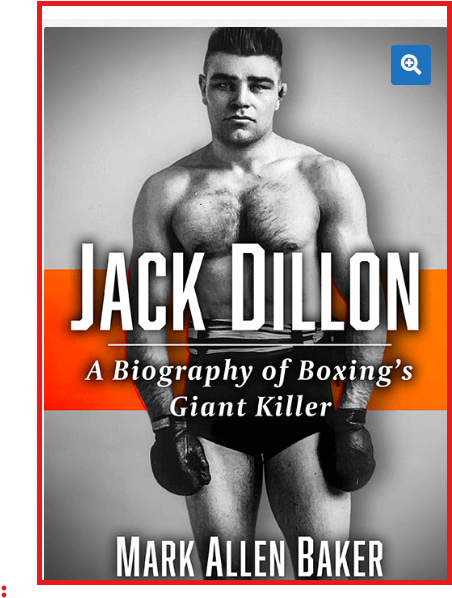
Jack Dillon’s name doesn’t resonate with boxing fans today. But he was important in his time.
Ernest Coulter Price was born in 1891 and turned pro at age seventeen. According to legend, when asked his name by the referee before his first fight, he answered “Sidney Dillon” (the name of a racehorse in a stable where he’d worked). The referee misunderstood him, announced him as “Jack Dillon,” and Jack Dillon was his fighting name from then on.
Dillon stood a shade over 5 feet 7 inches tall. He earned renown as a small light-heavyweight, was known as “Jack the Giant Killer,” and compiled a 94-9-16 (65 KOs, 2 KOs by) ring record not counting an estimated 125 “newspaper decisions.” He defeated Battling Levinsky in 1914 to claim the world 175-pound championship and lost the title to Levinsky two years later. He fought Levinsky ten times, winning six with two losses and two draws.
Dillon was always willing to go in tough. But he fought too long, got hit too often, and drank too much. He died at age 51 in a state psychiatric hospital in Florida.
Jack Dillon by Mark Allen Baker (McFarland & Company) tracks Dillon’s life and ring career from beginning to end. To his credit, Baker has done an enormous amount of research. But his writing style is heavy. He falls short of recreating a long-ago era when boxing captivated America. The character portraits are one-dimensional. And the book reads as though, after studying hundreds if not thousands of newspaper clippings, Baker decided to insert every bit of information he found. There are descriptions of fight after fight after fight after fight after fight after fight. After a while, most of the fights no longer seem to matter.
And when Baker tries to liven things up, he lapses into hyperbole (e.g. writing of Dillon, “From the opening gong, it was clear to every opponent, regardless of size or skill, that they were destined for destruction . . . When he looked up [toward the heavyweight division], there wasn’t a heavyweight alive who didn’t fear for his life.”)
I also had the feeling that, to prove the case for Dillon’s greatness, Baker massages the facts a bit. For example, lobbying for the idea that Dillon was deserving of a shot at heavyweight champion Jess Willard, Baker argues that several fighters had beaten much larger men to claim the heavyweight crown. He then cites James Corbett’s victory over John L. Sullivan (a supposed 35-pound weight differential), Bob Fitzsimmons’s triumph over Corbett (26 pounds), and Tommy Burns over Marvin Hart (45 pounds).
The problem is, those numbers are suspect. Adam Pollack (a leading authority on boxing’s early gloved champions) says that there were no official weigh-ins for heavyweight fights way back when. Weights were sometimes announced by a fighter’s camp in the lead-in to a fight or otherwise shared with the public. But the numbers were often inaccurate.
Both The Ring Record Book and Pollack’s research point to far smaller weight differentials than the numbers put forth by Baker. That’s important because it goes to the issue of scholarship. And yes; when Jack Dempsey brutalized Jess Willard, he was outweighed by at least fifty pounds. But Jack Dillon was no Jack Dempsey.
Still, even with its flaws, Jack Dillon performs a service in that it brings attention to a forgotten fighter and puts a great deal of information at the fingertips of readers who want to know more about “Jack the Giant Killer.”
* **
Jody Heaps spent three decades as a senior creative director and executive producer for boxing-related projects at Showtime. In recent years, he has redirected his attention to projects of his own. His two most recent efforts are worthy of mention.
One Night in the Many Deaths of Sonny Liston is a 40-minute play that imagines the last night of Liston’s life in December 1970 and his death at the hands of a “statuesque, provocatively-dressed, Las Vegas showgirl in her late-twenties” who visits his home unannounced with a “gift” from Sonny’s mob associates – a small packet of adulterated heroin that by design will kill him.
The writing flows exceptionally well. The play humanizes Liston in a credible way. And the tension builds nicely. But the narrative strains credibility with the plot twist that Liston accepts his death as inevitable and shoots up knowing that the heroin will kill him.
More recently, Heaps has written, directed, and co-produced a ten-minute play titled A Mop of Angels that can be seen in its entirety on YouTube at https://www.youtube.com/watch?v=hImmcG2pivM
Rich O’Brien is wonderful in the role of Spencer Olrich (an aging actor who has been replaced as the star of a successful action-movie franchise) and is now reading a play for minimal pay in a ninety-nine-seat black box theater in the middle of nowhere.
Or is that really who Olrich is?
Two themes – aging and the magic of theatre – are intertwined throughout the narrative. Olrich’s thoughts include:
* “Old age is the most surprising event in a man’s life. And the cruelest. I thought that getting old would take a whole lot longer than it did. And the worst part, you never see it coming until it’s too late.”
* “Nobody knows what happens after we exit this mortal coil. And nobody’s in any hurry to find out. But that fear of the unknown; that’s not the scariest part. You know what is? Being forgotten. You may die when your heart stops beating. But you cease to exist when nobody remembers your name.”
* “This school board contends that theater is a luxury. And you’re right. Theater doesn’t stop wars or end famines or cure deadly diseases. Yet a life without theater would be no life at all. For theater is where we celebrate the joy of our humanity and mourn the pain of our existence; where we pretend to be others only to discover ourselves. To you school board members in your suits and your ties, theater may be a luxury. But for those of us who dream, theater is no more of a luxury than wings are to an angel.”
Theatrical writing is an often-thankless endeavor. But Heaps loves doing it and says, “I’ve gotten better as I keep plugging away at it. At least, I hope I have.”
Does Jody miss boxing?
“Not at all,” he answers. “I always had mixed feelings about boxing. I still enjoy conversations about it from time to time. But do I follow it? No.”
* **
If you’ve been to one final pre-fight press conference, you’ve been to all of them. That’s a slight exaggeration. But the comments do tend to be predictable. Herewith, an example of what you’ll hear from the promoter and main event fighters.
The promoter will speak longer than all of the fighters on the card combined. His opening remarks will be along the lines of:
“I’d like to thank [name of site] for hosting this great event. There’s a saying in boxing that you haven’t fought until you’ve fought at [repeat name of site]. I’d also like to give a shout out to [names of sponsors]. And most importantly, thank you to [insert name of entity or individual funding the fight card]. We have a massive stacked event on tap. This might be the best fight card in the history of [repeat name of site]. [Name of main event A-side fighter] is the fastest-rising star in boxing today. But he’ll be facing a huge challenge when he looks across the ring on [insert date] and sees [name of B-side opponent] standing across from him.”
Toward the end of the proceedings after almost everyone in attendance has lost interest, the B-side fighter in the main event will speak:
“What’s up, everybody. I’d like to thank [name of promoter], [name of network],[my whole team], and God. I had a great training camp. Fighting [name of opponent] at [name of site] is an opportunity I’ve been waiting for my whole life. I’ve been through some things that wasn’t all my fault. But this is a dream come true. It means everything to me. From the time I was a little boy, I dreamed of seeing my face on posters. Not in the post office like my uncle was, but for a fight like this. I’m in the best career of my shape. Or whatever. You know what I mean. I’m looking forward to putting on a show and winning this fight for my fans. [Name of opponent] is a good fighter. I take my hat off to him. But I’m going to shock the world on Saturday night.”
And last, a word from the main event A-side fighter:
“I got nothing to say today. I’m tired of being disrespected by [names of offending entities]. I don’t listen to what people say about me. But what they say about me really pisses me off. You can all suck my [body part of choice].”
Thomas Hauser’s email address is thomashauserwriter@gmail.com. His most recent book – MY MOTHER and me – is a personal memoir available at Amazon.com. https://www.amazon.com/My-Mother-Me-Thomas-Hauser/dp/1955836191/ref=sr_1_1?crid=5C0TEN4M9ZAH&keywords=thomas+hauser&qid=1707662513&sprefix=thomas+hauser%2Caps%2C80&sr=8-1
In 2004, the Boxing Writers Association of America honored Hauser with the Nat Fleischer Award for career excellence in boxing journalism. In 2019, Hauser was selected for boxing’s highest honor – induction into the International Boxing Hall of Fame.
To comment on this story in the Fight Forum CLICK HERE
Featured Articles
Avila Perspective Chap 320: Boots Ennis and Stanionis

Jaron “Boots Ennis and Eimantis Stanionus are in the wrong era.
If they had fought in the late 70s and early 80s the boxing world would have seen them regularly on televised fight cards.
Instead, with the world’s attention span diluted by thousands of available programming, this richly talented pair of undefeated welterweights Ennis (33-0, 29 Kos) and Stanionis (15-0, 9 Kos) will battle in the smaller confines of Boardwalk Hall in Atlantic City on Saturday April 12.
Thankfully, DAZN will stream the WBA and IBF welterweight world title fight on the Matchroom Boxing card.
If not for DAZN these two elite fighters and the sport of pro boxing might be completely invisible to the sports entertainment world.
These welterweights are special.
Ennis, a lean whip-quick fighter out of Philadelphia, stylistically reminds me of a Tommy Hearns but not as tall or long-armed as the Detroit fighter of the past.
“Win on Saturday and I’m the WBA, IBF and Ring Magazine champion, and then we’ll see what’s next. But I am zoned in on Stanionis,” said Ennis the IBF titlist.
Lithuania’s Stanionis and his pressure style liken to a Marvelous Marvin Hagler who would walk through fire to reach striking distance of a foes chin or abdomen.
“Ennis is slick, explosive, and they say he’s the future of the division. That’s why I signed the contract. I don’t duck anyone—I run toward the fire,” Stanionis said.
When Hagler and Hearns met in Las Vegas on April 1985, their reputations had been built on television with millions watching against common foes like Roberto Duran and Juan Roldan. Both had different styles just like Stanionis and Ennis and both could punch.
One difference was their ability to take a punch.
Hagler had a chin of steel, Hearns did not.
When Ennis and Stanionis meet in the boxing ring this Saturday, each is facing the most dangerous fighter of his career. Whose chin will hold up is the true question?
“This isn’t gonna be a chess match. This is going to be a war,” said Stanionis who holds the WBA title. “I’m stepping into that ring to test him, break him, and beat him. Let’s see how he handles real pressure.”
Ennis just wants to win.
“I’m at the point right now where I don’t care what people say,” said Ennis. “I’m here to do one thing and that’s put hands on you, that’s it.”
Golden Boy in Oceanside, CA
Next week budding star Charles Conway (21-0, 16 Kos) meets Mexico’s Jorge Garcia Perez (32-4, 26 Kos) in the semi-main event at Frontwave Arena in Oceanside, California on Saturday April 19.
The two super welterweights are both ranked in the top 10 and the winner moves up to the elite level of the very stacked super welterweight division.
Conwell, who trains in Cleveland, Ohio, has been one of boxing’s best kept secrets and someone few champions and contenders want to face. Take my word for it, this kid can fight.
On the main event is undisputed female flyweight world champion Gabriela Fundora (15-0, 7 Kos) defending all her titles against Mexico’s Marilyn Badillo (19-0-1, 3 Kos).
Fundora is quickly becoming the most feared champion in boxing.
360 Promotions
Super welter prospect Sadridden Akhmedov (15-0, 13 Kos) meets Elias Espadas (23-6, 16 Kos) in the main event on Saturday April 19, at the Commerce Casino in Commerce, Calif. The 360 Promotions event will be streamed on UFC Fight Pass.
Also, Roxy Verduzco (3-0) meets Jessica Radtke (1-1-1) in a six rounds featherweight battle.
Fights to Watch
Sat. DAZN 5 p.m. Jarron Ennis (33-0) vs Eamantis Stanionis (15-0).
Photo credit: Mark Robinson
-
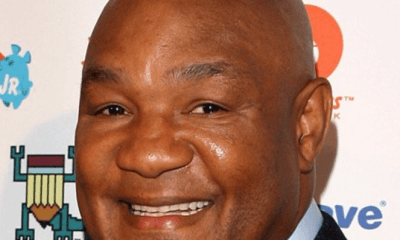
 Featured Articles3 weeks ago
Featured Articles3 weeks agoBernard Fernandez Reflects on His Special Bond with George Foreman
-
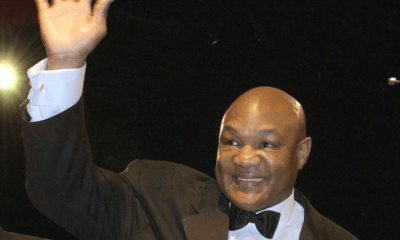
 Featured Articles3 weeks ago
Featured Articles3 weeks agoA Paean to George Foreman (1949-2025), Architect of an Amazing Second Act
-
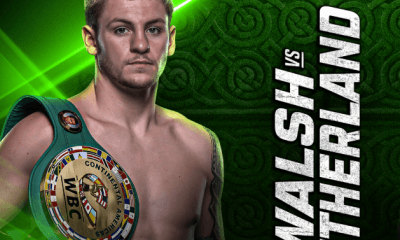
 Featured Articles4 weeks ago
Featured Articles4 weeks agoNotes and Nuggets from Thomas Hauser: Callum Walsh Returns to Madison Square Garden
-
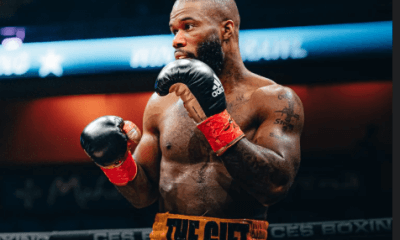
 Featured Articles4 weeks ago
Featured Articles4 weeks agoSpared Prison by a Lenient Judge, Chordale Booker Pursues a World Boxing Title
-
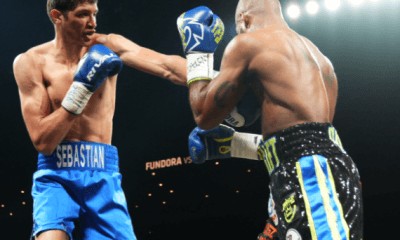
 Featured Articles3 weeks ago
Featured Articles3 weeks agoSebastian Fundora TKOs Chordale Booker in Las Vegas
-
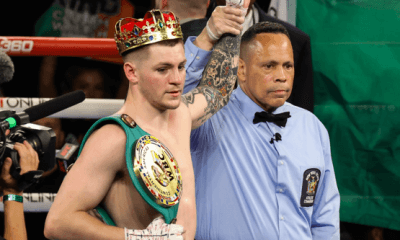
 Featured Articles4 weeks ago
Featured Articles4 weeks agoEver-Improving Callum Walsh KOs Dean Sutherland at Madison Square Garden
-
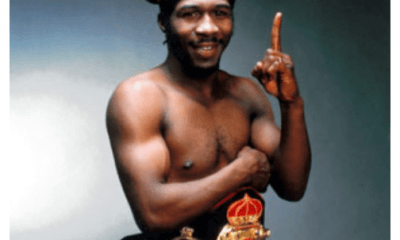
 Featured Articles3 weeks ago
Featured Articles3 weeks agoBoxing Odds and Ends: The Wacky and Sad World of Livingstone Bramble and More
-
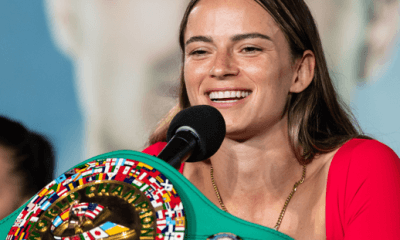
 Featured Articles3 weeks ago
Featured Articles3 weeks agoAvila Perspective, Chap. 318: Aussie Action, Vegas and More















